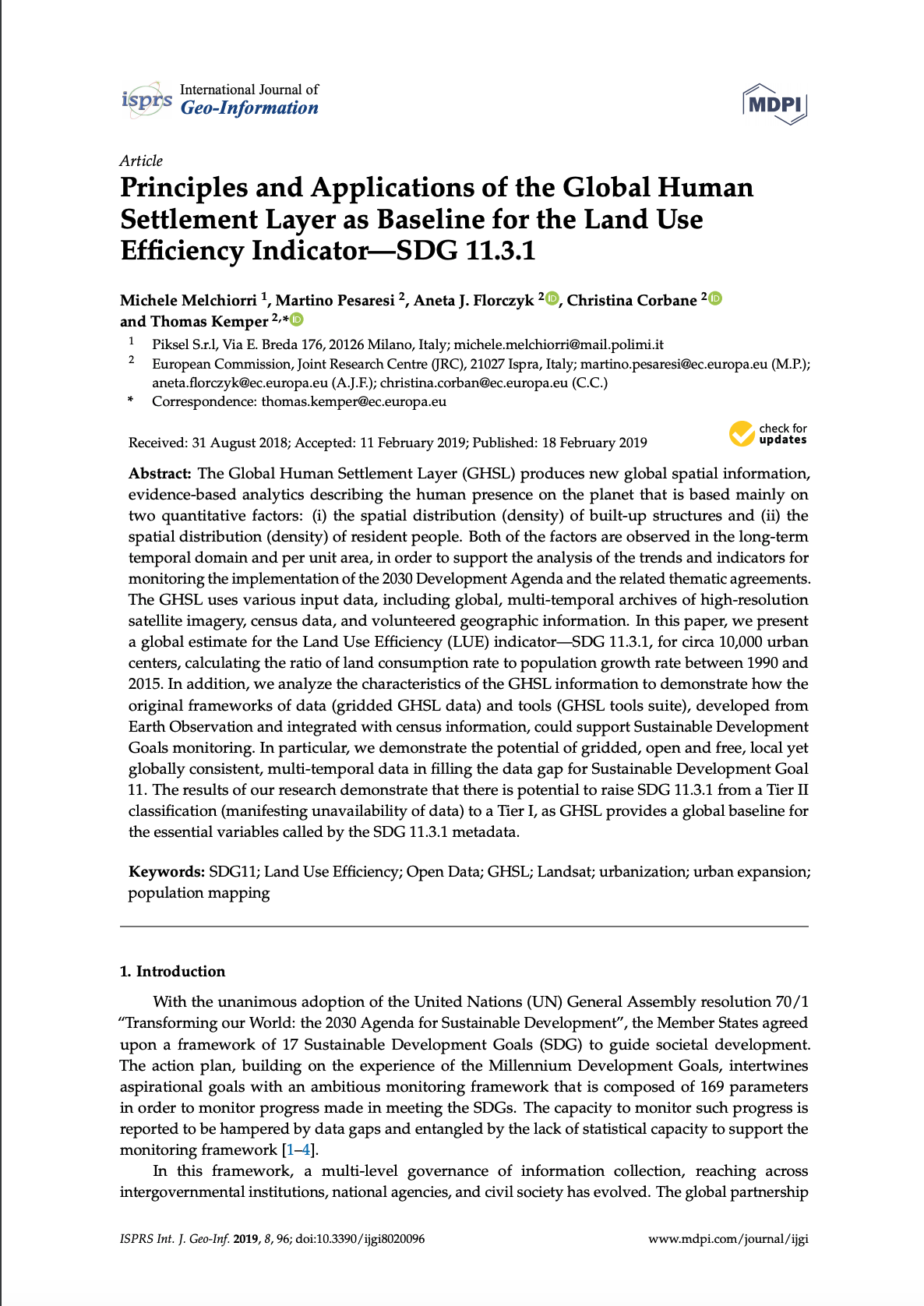Resource information
The Global Human Settlement Layer (GHSL) produces new global spatial information, evidence-based analytics describing the human presence on the planet that is based mainly on two quantitative factors: (i) the spatial distribution (density) of built-up structures and (ii) the spatial distribution (density) of resident people. Both of the factors are observed in the long-term temporal domain and per unit area, in order to support the analysis of the trends and indicators for monitoring the implementation of the 2030 Development Agenda and the related thematic agreements. The GHSL uses various input data, including global, multi-temporal archives of high-resolution satellite imagery, census data, and volunteered geographic information. In this paper, we present a global estimate for the Land Use Efficiency (LUE) indicator—SDG 11.3.1, for circa 10,000 urban centers, calculating the ratio of land consumption rate to population growth rate between 1990 and 2015. In addition, we analyze the characteristics of the GHSL information to demonstrate how the original frameworks of data (gridded GHSL data) and tools (GHSL tools suite), developed from Earth Observation and integrated with census information, could support Sustainable Development Goals monitoring. In particular, we demonstrate the potential of gridded, open and free, local yet globally consistent, multi-temporal data in filling the data gap for Sustainable Development Goal 11. The results of our research demonstrate that there is potential to raise SDG 11.3.1 from a Tier II classification (manifesting unavailability of data) to a Tier I, as GHSL provides a global baseline for the essential variables called by the SDG 11.3.1 metadata. View Full-Text


